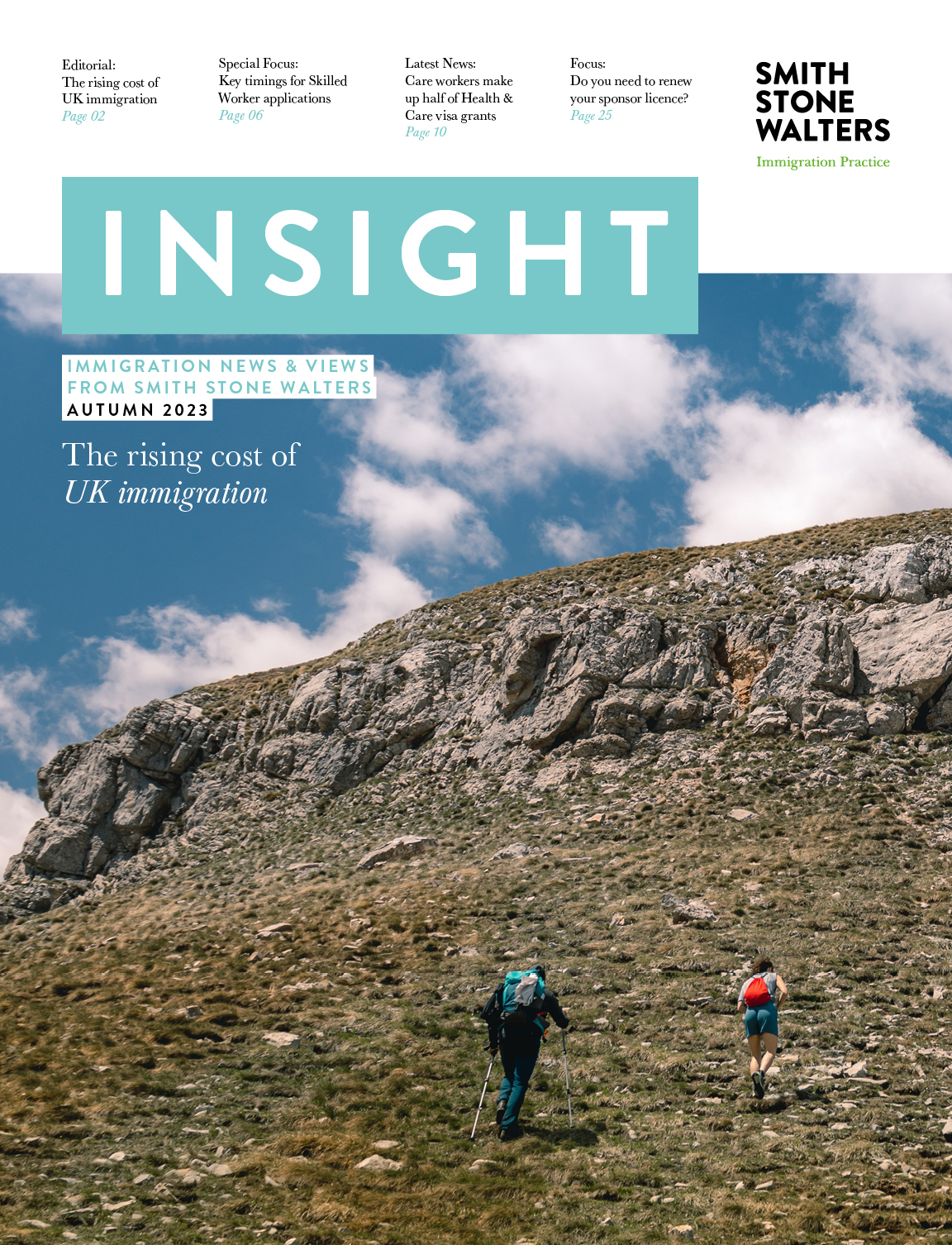Immigration in Numbers: The latest UK migration statistics
On 27 August, the Office for National Statistics published its quarterly report on the latest official migration statistics for the UK.
The report covers the period up to the year ending March 2020. These latest figures are drawn from data from the Home Office, Department for Work and Pensions (DWP) and Higher Education Statistics Agency (HESA), and provide the most up to date estimates on people crossing the UK border under UK immigration controls. Here, we take a look at the report’s key findings.
Net migration statistics
Net migration refers to the difference between the number of people arriving and those leaving the country.
The report estimates that throughout the year around 715,000 people moved to the UK and around 403,000 left the UK, leaving a net migration figure of 313,000 for the year ending March 2020. This represents the highest level on record since March 2016, when the estimated figure was 326,000.
The report suggests that long-term net migration between 2016 and 2019 remained broadly stable, however recent data shows an increase in immigration and net migration. This increase has been driven by a rise in non-EU students arriving in the UK to study, mainly Chinese and Indian citizens.
EU vs non-EU migration statistics
For both EU and non-EU citizens, more people come to the UK than leave the UK, meaning both groups have contributed to the increase in net migration.
EU migration has declined between 2016 and 2018, following peak levels of over 200,000 in 2015 and early 2016. However, net migration of EU citizens has stabilised since 2018, standing at 58,000 in the year ending March 2020.
Non-EU immigration is currently at some of the highest levels recorded, mainly due to more migrants arriving for formal study. An estimated 316,000 more non-EU citizens moved to the UK than left in the year ending March 2020, a gradual increase since 2013.
Latest visa data from the Home Office
Of the 715,000 people arriving in the UK during this period, 257,000 were arriving for formal study and 458,000 were coming to the UK for work, family or other reasons.
- Work – Separate Home Office data for the year ending June 2020 shows 144,938 work-related visas were granted, down 22% from the previous year. 60% of non-EU work migrants came to the UK for skilled work on a Tier 2 visa. Non-EU migrants arriving for work not classified as skilled are mainly arriving under the Youth Mobility Scheme or as dependants.
- Study – Continuing a long-term trend, in this period formal study remained the most common reason for non-EU citizens to come to the UK, with an estimated 196,000 intending to stay for a year or more for formal study. This accounts for over half (51%) of total non-EU immigration. In total, there were 299,023 Tier 4 study visas granted in the year ending March 2020, the highest level since the year ending June 2011 and an increase of 23% from the previous year.
- Asylum – Home Office data shows that the UK offered protection to 16,952 people in the year ending June 2020, down 8% from the previous year. This covers cases of asylum, humanitarian protection and alternative forms of leave and resettlement, and included 11,116 grants of asylum.
EU Settlement Scheme statistics
In a separate release on 27 August, the Home Office provided the latest quarterly statistics on the EU Settlement Scheme (EUSS).
The report looks at the total number of applications to the EUSS between 28 August 2018 and 30 June 2020, and their outcomes. The key statistics are as follows:
- Over 3.7 million (3,721,960) applications to the EUSS have been received as of June 2020
- 91% of applications were received in England, followed by 5% in Scotland, 2% in Wales and 2% in Northern Ireland
- The highest number of applications received were from Polish, Romanian and Italian nationals
- Of the total applications received, 3.4 million (3,462,610) had been concluded up to 30 June 2020
- Of the concluded outcomes, 57% were granted settled status, 41% were granted pre-settled status and 1% had other outcomes (refusals, withdrawals, or void or invalid applications)
EU citizens living in the UK by 31 December 2020 have until 30 June 2021 to submit an application to the EUSS. Below is our video guide to the application process:
Speak to an immigration advisor
If you have questions or need support with business or individual immigration, the Smith Stone Walters team is here to help.
Our advisors based in London, New York, Hong Kong and Mumbai will work with you from initial consultation to delivery of your visa, giving you peace of mind that your application is in good hands.
Contact us today to find out how we can help.










